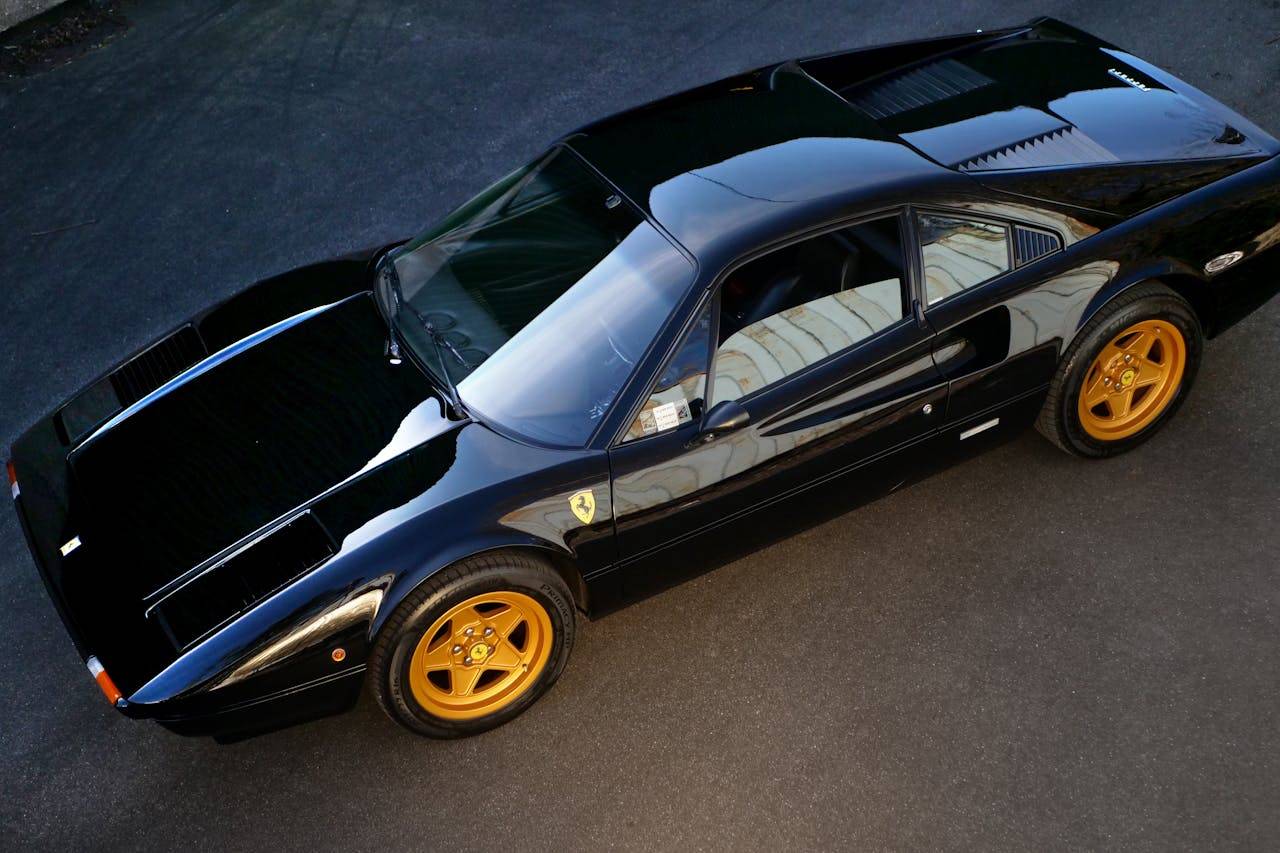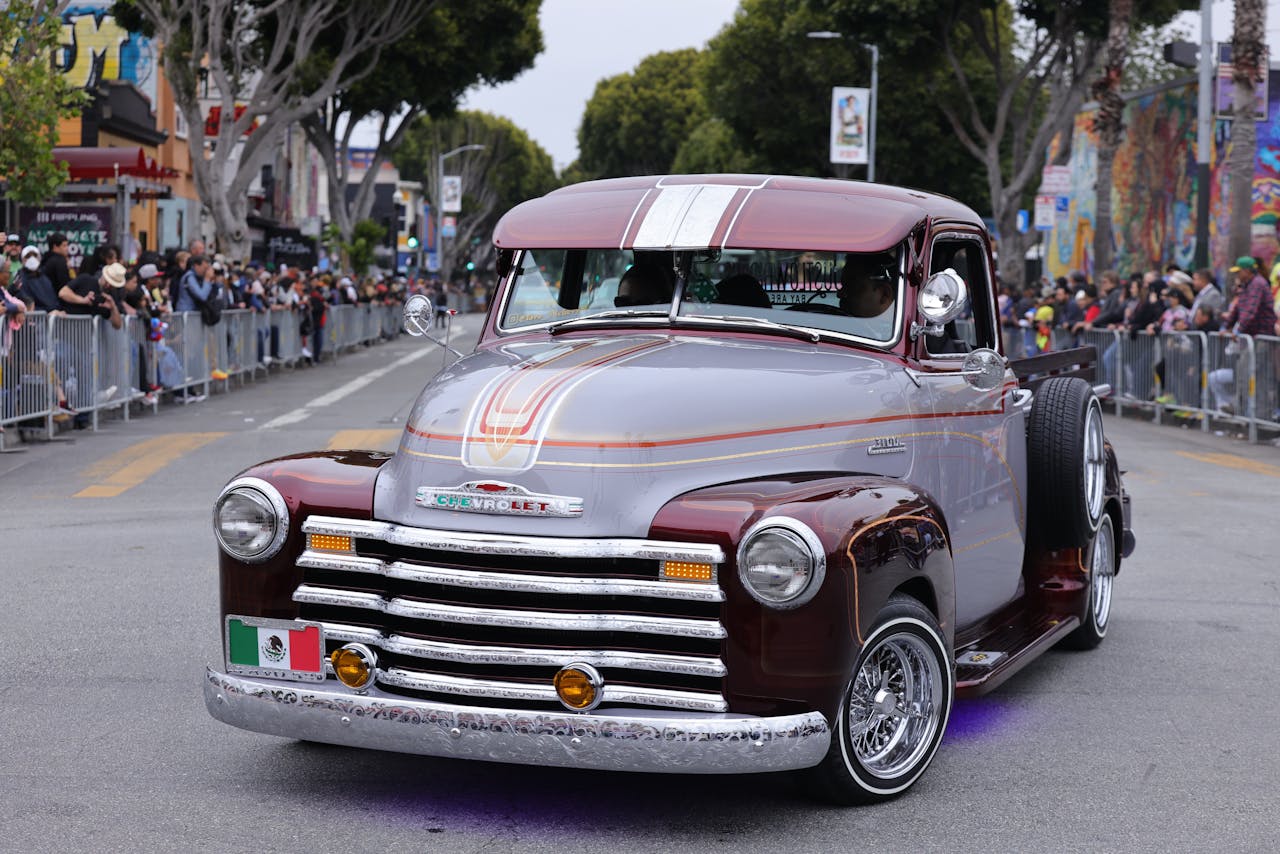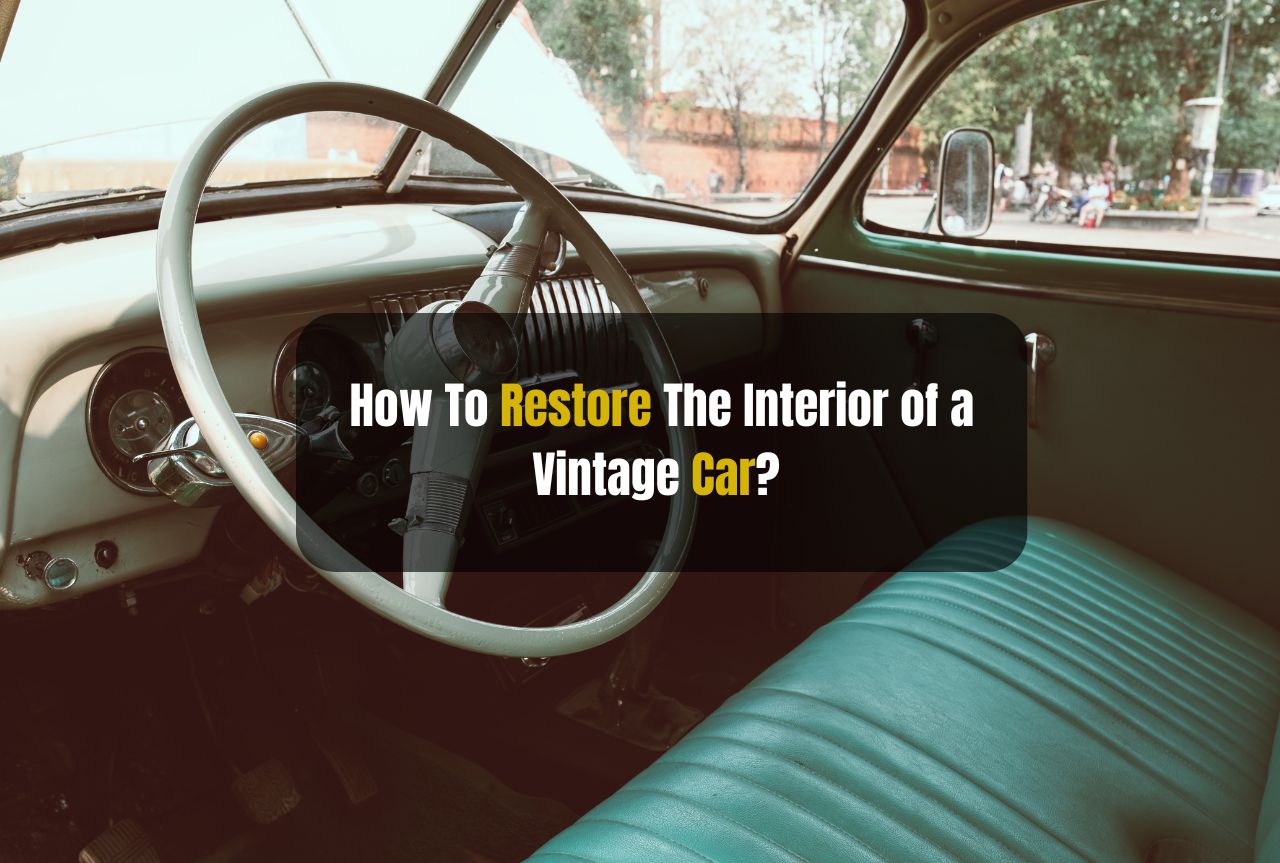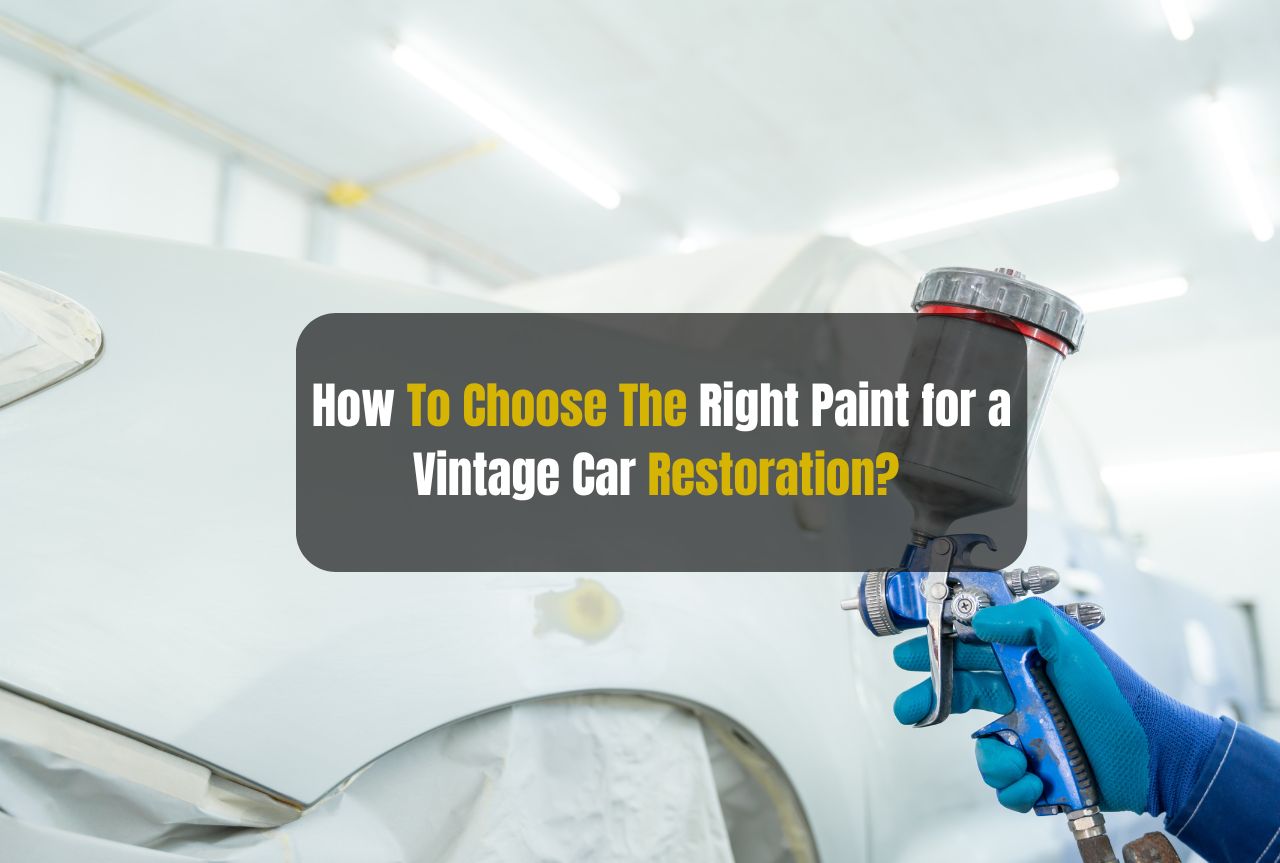Vintage cars are works of art embody the essence of the past: the wonder and technology of a bygone era made available to the public after years of production. Owning, restoring, and caring for a vintage car requires immense attention to the finest details, particularly regarding upholstery.
The choice of materials for a vintage car is paramount when building its interior since it is where the car owner can spend lengthy hours during a road trip. The upholstery must be practical enough to stand the test of time while looking as authentic as the original classic design—a tall order.
In this ultimate guide, we cover everything there is to know about the best materials for vintage car upholstery available today. From choosing high-quality fabrics to suitable vinyl and leather materials and assessing the capabilities of automotive upholstery centers, our guide will help you restore classic vintage cars to their former glory.
Understanding Vintage Car Upholstery
Before discussing new products, defining high-quality car upholstery for vintage vehicles is better. Ancient cars had luxurious details usually made of the highest-quality materials to provide the drivers and passengers with comfort, beauty, and usability.
The old interiors of classic cars encompass more than just the seats. When you’re thinking about restoring a vintage vehicle, you also need to consider the upholstery on your door panels, headliners, carpets, dashboards… Indeed, the choice of materials plays into the entire aesthetic of the car’s interior.
Key Considerations for Upholstery Materials
When selecting materials for vintage car upholstery, several factors should guide your decision:
Authenticity:
Preserving the car’s original appearance can be very important, sometimes to the point of using materials that match or come close to the original. This preserves the vehicle’s historical integrity.
Durability:
Vintage cars may not be driven daily, but their interiors must last. Durable materials not only keep the upholstery intact, but they also keep the look fresh.
Comfort:
The essential is comfort. The material on which you sit needs to be soft and supportive. It should feel nice when you are driving in your car.
Maintenance:
You might also want to consider just how easy it is to keep a material clean and maintain it in good condition. Some materials need a lot more care than others.
With these factors in mind, let’s explore the best materials for vintage car upholstery.
The Best Materials For Vintage Car Upholstery
1. Leather
Classic car upholstery leather is the traditional material used for upholstery in old cars. It is durable and elegant and gives the car a look and feel that has not lost any of its timelessness.
Advantages:
- Authenticity: Leather was used everywhere in a classic car, so it had to be leather.
- Durability: Good leather can last a lifetime, provided you look after it and wear better than many other materials.
- Aesthetics: Leather ages gracefully, developing a patina that enhances its character over time.
Disadvantages:
- Price: One of the pricier upholstery options. For cost-conscious restorers, this is an important consideration.
- Maintenance: Leather needs regular conditioning to fend off drying and cracking – more work than many other fabrics.
Best Practices:
If you want leather for a vintage car interior, choose only high-grade, automotive-specific leather that’s treated for the rigors of an automobile and its specific challenges of sunlight and temperature extremes. Keep it clean and conditioned.
2. Vinyl
Vinyl, popularly known as faux leather, is another material that can be used on upholstery in vintage cars. This material resembles leather in its physical attributes on the upholstery but brings with it its own set of pros and cons.
Advantages:
- Affordability: Vinyl is generally less expensive than leather, making it a budget-friendly option.
- Playability: Modern vinyl is a good medium for DJs to manipulate, cut, and blend.
- Durability: Modern vinyl is harder-wearing and less vulnerable than the original Portable Picking Hitting Paragraph.
Low Maintenance: Cleaning up and maintaining vinyl is less intensive than cleaning leather; no conditioning is required, and it’s stain- and spill-resistant.
Disadvantages:
- Aesthetics: Though vinyl might look like leather, it feels nothing like it – and doesn’t age the same way.
- Comfort: Vinyl can become hot and sticky in warm weather, which may affect comfort.
Best Practices:
Pesky stains can be cleared with a damp cloth, and regular cleaning with mild soap and water ensures vinyl upholstery stays fresh-looking. Good-quality, automotive-grade vinyl offers the best wear and gives the closest approximation to leather in appearance.
3. Fabric
Its strength and versatility lie in an unlimited range of fabric upholstery, spanning from plain tweeds to every modern mix of synthetics and cotton.
Advantages:
- Comfort: Fabric is generally more comfortable than leather or vinyl, especially in extreme temperatures.
- Diversity: There’s a vast amount of color, pattern, and texture to choose from, so the interior can be completely bespoke.
- Affordability: Fabric is often more affordable than leather, making it a less costly option for many restoration-minded devotees.
Disadvantages:
- Durability: Fabric will wear out faster than leather or vinyl, especially in high-traffic areas.
- Maintenance: The stains on fabric are more visible as they build up over time than on a leather sofa, so keeping your furniture clean helps to maintain it.
Best Practices:
To ensure longevity, we recommend automotive-grade fabrics, which are designed to stand up to fading and staining. For superior stain resistance and easy clean-up, we also suggest fabric treatments such as Scotchgard or Stain Shield. Regular vacuuming and immediate intervention with spills are keys to maintaining the fabric’s clean look over time.
4. Wool
Wool was the most expensive material used in vintage cars with a racing spirit, representing the most important combination of comfort, durability, and style for many years in the history of motoring.
Advantages:
- Aesthetics: Wool is classic at the end of the story. It just fits with the look and elegance of old car interiors.
- Comfort: The sheep’s wool is naturally breathable, making the interior comfortable in most temperatures. This is particularly helpful in an open-top car, like a convertible or a classic sports car.
Durability: Good quality wool is durable and ready to withstand wear, especially for long-term use.
Disadvantages:
- Cost: Wool is one of the more expensive upholstery materials.
- Maintenance: Wool requires careful maintenance to prevent moth damage and stains.
Best Practices:
Use high-grade, automotive-specific wools for wool upholstery. With appropriate regular (every several months) cleaning and moth-proofing applications, wool upholstery will maintain its appearance and function. Use wool blends when desiring more durability and ease of maintenance.
5. Mohair
One notable option is a material called Mohair, from the hair of the Angora goat, which also carries a certain gravity when used in high-end vintage cars in the realm of luxury. It felt plush and soft, and it also looked that way.
Advantages:
- Aesthetics: Mohair is so expensive and sleek – it just looks proper in any classic car interior.
- Comfort: Mohair is very soft, making it a luxurious option for seats and upholstery.
- Durability: Mohair is strong and resilient, capable of withstanding significant wear and tear.
Disadvantages:
- Cost: Mohair is expensive, reflecting its premium quality and luxurious feel.
- Maintenance: Mohair requires careful cleaning and maintenance to avoid damage and maintain its appearance.
Best Practices:
Choose high-grade automotive-grade mohair fabrics. Always clean carefully, vacuum regularly, and handle gently. Professional cleaning can help keep mohair upholstery in good condition.
6. Naugahyde
When it came time to restore a vintage A-model convertible, Naugahyde, a mostly synthetic vinyl leather, was a good option that was cheaper and easier to work with than real leather. The vinyl looks and feels like real leather, but it also brings its unique advantages.
Advantages:
- Affordability: Naugahyde is generally less expensive than genuine leather.
- Durability: Very durable and resistant to wear. Use it forever.
- Low Maintenance: Naugahyde is easy to clean and maintain, requiring less effort than leather.
Disadvantages:
- Aesthetics: Though it might superficially resemble leather, Naugahyde can provide a different tactile experience and will only break in over time.
- Comfort: Like vinyl, Naugahyde can become hot and uncomfortable in warm weather.
Best Practices:
For the best appearance and durability, choose good-quality Naugahyde. Clean with mild soap and water. Do not use strong chemicals which may harm the surface.
7. Cloth Headliners
The headliner tends to need the most cloth-like materials since they give the most comfortable, finished look and are available in the most extensive range of colors and textures.
Advantages:
- Aesthetics: Cloth headliners offer a refined, elegant appearance that complements vintage interiors.
- Comfort: Cloth is breathable and comfortable, reducing heat buildup inside the car.
- Variety: There are many options in terms of color and texture, allowing for customization.
Disadvantages:
- Durability: Cloth headliners can sag or become discolored over time, especially in humid conditions.
- Maintenance: They require regular cleaning and care to maintain their appearance.
Best Practices:
Use only top-grade leak-proof automotive cloth to prevent damage from moisture, dust, or dirt. Proper installation minimizes sagging, while special fabric treatments can guard against stains and discoloration. Regular vacuuming and general cleaning will maintain headliners.
8. Carpet
Carpeting is another important part of a vintage car interior. It improves the interior’s appearance and adds comfort and noise reduction.
Advantages:
- Aesthetics: Quality carpeting adds a finished, luxurious look to the car’s interior.
- Comfort: Carpeting provides a soft, comfortable surface underfoot.
- Noise Reduction: Good carpeting helps dampen road noise, enhancing the driving experience.
Disadvantages:
Longevity: A Carpet wears out, especially where it’s subject to wear, such as the driver’s and passenger’s footwell.
Maintenance: Carpets can be challenging to clean, especially if they become stained or dirty.
Best Practices:
Specify automotive-grade carpets with a durable and stain-resistant texture. Then, add a carpet pad for comfort and quiet. Vacuum often and sponge up liquids quickly to maintain the carpet’s appearance.
Final Thoughts
Restoring the upholstery on an older automobile, such as a 1976 Mercedes-Benz 450 SL with grey leather upholstery, grey velour door panels, and grey top, is an involved process that includes selecting individual materials to restore the original texture, appearance, durability, and quality of the appearance and feel.
Leather versus vinyl versus fabric versus wool versus Mohair versus Naugahyde versus cloth headliner versus carpeting. Every material has its characteristics in terms of the property set it makes available in restoring the materials.








Leave a Comment